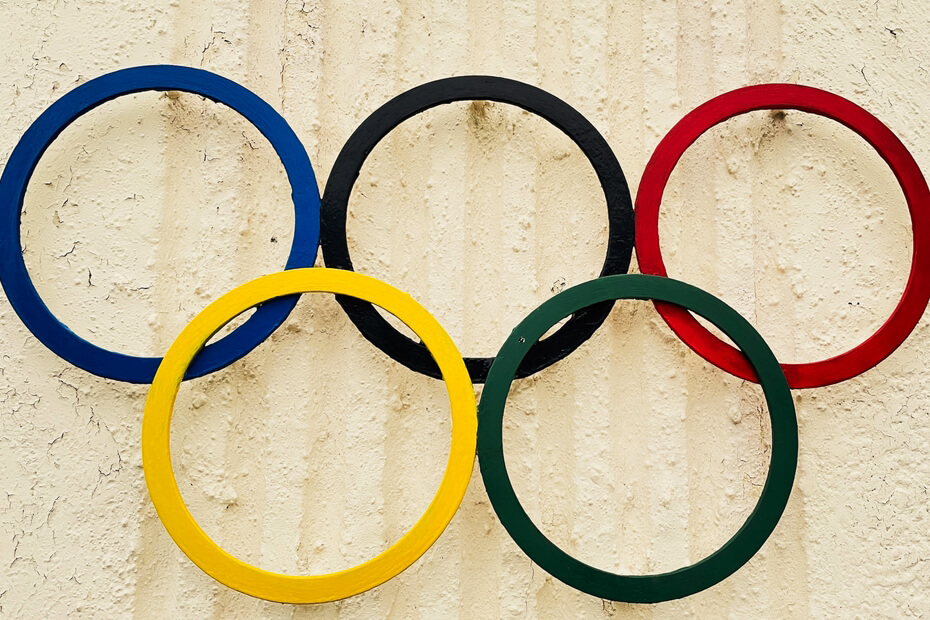Olympic tennis has a rich history that dates back to the early days of the modern Olympic Games. From its humble beginnings to its current status as one of the most popular sports in the Olympics, tennis has captivated audiences around the world. Let’s take a closer look at the fascinating history of Olympic tennis.
When Did Tennis Become an Olympic Sport?
Tennis was initially included in the inaugural modern Olympic Games held in Athens in 1896 as one of the original sports, showcasing its popularity even in those early days. However, after the 1924 Olympics, tennis was excluded due to disagreements between the International Lawn Tennis Federation and the International Olympic Committee.
The dialogue between the two authorities resumed in 1956, leading to tennis being featured as an exhibition sport at the 1968 Mexico Games. However, it didn’t award any medals.
The turning point came in 1987 when tennis was voted back into the Olympic program as a full-medal sport. The decision marked an end to Olympic amateurism, allowing professional players to compete. The sport made its official return at the 1988 Seoul Olympics. This marked a significant moment for the sport, as it was reintroduced as a medal event. Since then, tennis has become a permanent fixture in the Summer Olympics, attracting top players from around the world.
The First Olympic Tennis Tournament
The first Olympic tennis tournament took place in 1896 and was held on grass courts. It was won by John Pius Boland of Great Britain, who defeated Dionysios Kasdaglis of Greece in the final.
Since then, many legendary tennis players have made their mark on Olympic history. Steffi Graf became the only person, man or woman, to achieve the Golden Slam in a single season by winning the women’s singles title at the 1988 Olympics, along with all four major tournaments.
The Absence and Return of Tennis in the Olympics
Tennis has a long and interesting history with the Olympic Games. Although it was part of the original Olympic Games in 1896, it was excluded after the 1924 Olympics and did not make a comeback until many years later.
The exclusion of tennis from the Olympics for over 60 years was due to a conflict between the International Olympic Committee (IOC) and the International Lawn Tennis Federation (ILTF) over the concept of amateurism. The IOC’s charter defined amateurism and prohibited professional players from participating in the games. The ILTF argued that professional players should be allowed to compete, but the IOC opposed their proposal.
Rumors suggest that the amateurism debate was a cover-up, as authorities at Wimbledon did not want the Olympics to overshadow The All England Lawn Tennis Championships. As a result, tennis was removed from the Olympic program.
After 32 years of silence, discussions between the IOC and ILTF began in 1956. Tennis made its return to the Olympics as a demonstration sport in the Mexico Olympics in 1968. The success of tennis as a demonstration event led to further dialogue between the federations.
In 1988, tennis finally regained its status as a medal event at the Seoul Olympics, thanks to the efforts of Juan Antonio Samaranch, the new president of the IOC. Since then, tennis has been an integral part of the Olympic Games.
Overall, the absence and eventual return of tennis in the Olympics highlights the significance of the sport and its enduring appeal to athletes and fans alike.
Format and Rules of Olympic Tennis
Over the years, the format and rules of Olympic Tennis have gone through changes. In the beginning, only amateurs were permitted to take part in the competition. However, as time passed, the rules were altered, eventually allowing both amateurs and professionals to compete in Olympic Tennis. This evolution of format and rules has brought broader inclusivity and raised the level of competition in the Olympic Games.
The Olympic Tennis tournament consists of both men’s and women’s singles and doubles events. The number of participants is limited to 64 for singles and 32 for doubles. The tournament follows a single-elimination format, where players compete in a series of matches until one player or team emerges as the winner.
The eligibility criteria for participation require players to meet certain ranking requirements set by the International Tennis Federation (ITF).
Notable Moments in Olympic Tennis History
The history of Olympic Tennis is filled with memorable moments that have captivated fans around the world. From incredible matches to record-breaking performances, the sport has provided some of the most exciting moments in Olympic history.
One such moment occurred in 1896 when tennis was included as one of the original nine events in the first Summer Games held in Athens. John Pius Boland of England emerged as the singles champion, while he teamed up with German Friedrich Traun to win the men’s doubles title. This marked the beginning of tennis at the Olympic Games.
Moving forward to the 1900 Summer Olympics, another unforgettable moment was produced when Charlotte Cooper etched her name in history as the first woman ever to win an Olympic gold medal in tennis. Even more remarkably, she was the first female to achieve the honor of a gold medalist across any sport category in the Olympic Games.
Some other notable moments include Venus Williams winning both singles and doubles gold medals at the Sydney Olympics in 2000, Rafael Nadal winning his first gold medal in singles at the Beijing Olympics in 2008, and Andy Murray’s historic victory over Roger Federer at the London Olympics in 2012.
These moments not only showcase the talent and skill of the athletes but also highlight the significance of tennis as a sport at the Olympic Games. With each edition, new records are set, and new stars emerge, making Olympic Tennis a must-watch event for sports enthusiasts around the world.
Legendary Players Who Have Made Their Mark in Olympic Tennis
Olympic tennis has seen some incredible talent over the years, with legendary players leaving their mark on the sport. These players have not only achieved success in their professional careers but have also made history in the Olympic Games.
- Venus Williams
Venus Williams is hailed as the most accomplished tennis player in Olympic history, owing to her remarkable talent and numerous medals. She has won a total of five Olympic medals, consisting of four golds and one silver. Venus has established her dominance on the Olympic tennis courts with her outstanding performances. Her achievements include winning gold medals in both the singles and doubles categories at the 2000 Sydney Olympics. Additionally, she clinched gold in the doubles event at the 2008 Beijing and 2012 London Olympics.
- Serena Williams
Another legendary player is Serena Williams, Venus’ younger sister. Serena is a four-time Olympic gold medalist, with three gold medals in doubles and one in singles. She has showcased her exceptional skills on the Olympic stage, including her memorable victory over Maria Sharapova in the singles final at the 2012 London Olympics.
- Steffi Graf
Steffi Graf is another name that stands out in Olympic tennis history. She achieved a remarkable feat known as the “Golden Slam” by winning all four Grand Slam titles and an Olympic gold medal in a single calendar year. Graf’s dominance on the court was evident not only in her professional career but also in her Olympic performances.
These legendary players have not only left a lasting impact on the sport of tennis but have also inspired future generations of athletes to strive for greatness on the Olympic stage. Their achievements serve as a reminder of the incredible talent and dedication required to excel in Olympic tennis.
Controversies and Challenges
Olympic tennis has faced controversies and challenges that have both directly impacted the competition and reflected broader issues within the sport. One ongoing controversy revolves around player participation. Since its reintroduction in the Olympics in 1988, tennis has struggled to attract top players due to its lower ranking points and prize money compared to Grand Slam tournaments. This has raised questions about the prestige of Olympic tennis and the incentives for players to prioritize it.
Another challenge faced by Olympic tennis is related to scheduling. The tournament often takes place in the middle of the summer hard-court season, in close proximity to other major tournaments like Wimbledon and the US Open. This compact schedule puts players at risk of injury and fatigue, especially considering the physically demanding nature of tennis. Consequently, some players withdraw from the competition to protect their physical well-being.
Tennis, like many other sports, has also been marred by allegations of match-fixing. The Olympic tennis event is not immune to this issue, and there have been instances where suspicions of illegal betting and manipulation have surfaced. In response, the sport’s governing bodies had to establish independent reviews to address these concerns and maintain the integrity of the game.
Lastly, the controversy surrounding ATP ranking points has been a topic of concern for Olympic tennis. Historically, players had the opportunity to earn ranking points at the Olympics, but this system has been phased out. This decision has sparked criticism from some players, as they believe the absence of ranking points diminishes the significance of the competition. Finding a fair and universally accepted solution to this issue will be crucial in maintaining the relevance and competitiveness of Olympic tennis.
Recent Developments
In recent years, Olympic Tennis has undergone several changes and updates to make the sport more exciting and inclusive. One significant development is the addition of mixed doubles to the Olympic program after an absence of 84 years, from 1928 to 2012. This allows male and female players to compete together as a team, adding a new dynamic to the competition.
The inclusion of mixed doubles has been well-received by players and fans alike. It provides an opportunity for players to showcase their skills in a different format and allows for more diversity in the teams. It also adds an element of strategy, as players must adapt their game to work effectively with their partner.
Another recent change in Olympic Tennis is the introduction of tiebreakers in all sets, including the final set. This ensures that matches do not extend for an indefinite period and allows for more efficient scheduling of matches during the Olympics.
The Future of Tennis in the Olympics
The future of Olympic tennis looks incredibly promising, with continued growth, anticipation, and exciting prospects on the horizon. As the sport gains even more popularity worldwide, we can expect to see some remarkable developments in the upcoming Olympic Games.
Firstly, the participation of top-ranked professional tennis players in the Olympics is expected to increase. With the prestige and significance of Olympic medals, more elite players are likely to prioritize the Games in their schedules. This will raise the level of competition and make for thrilling matches that fans around the globe will eagerly tune in to watch.
Moreover, the inclusion of new and emerging talents from different nations will add an additional layer of excitement. As tennis continues to expand its global reach, we can anticipate seeing fresh faces and unexpected talent making waves on the Olympic stage.
Technological advancements will also play a significant role in the future of Olympic tennis. From improved court surfaces to state-of-the-art equipment, these advancements will enhance the overall experience for players and spectators alike. Additionally, innovations in broadcasting and digital platforms will enable fans to engage with the sport in innovative ways, making Olympic tennis more accessible and captivating than ever before.
Overall, the future of Olympic tennis is filled with promise and excitement. From the participation of top players to the emergence of new talents and the integration of technology, the Games will continue to captivate audiences and inspire the next generation of tennis stars.







